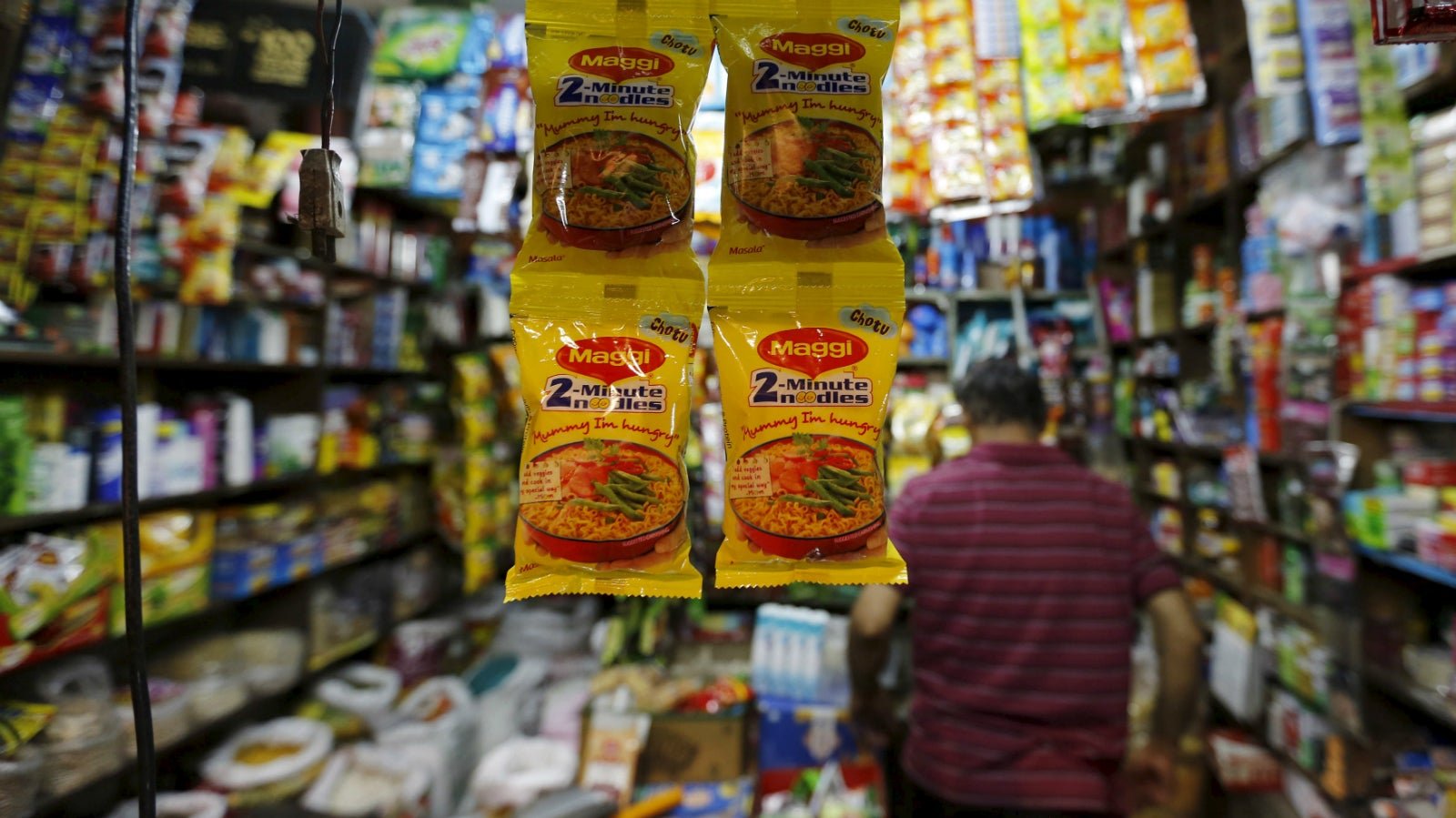Once “reticent,” Nestle now woos an aspirational India after burning millions on the Maggi disaster
In July 2015, when Suresh Narayanan took over as managing director and chairman of the Nestle’s India business, the “fire was burning and bright.” The fire he referred to was the credibility crisis the world’s largest food products company suffered following allegations that its popular instant noodle brand, Maggi, contained monosodium glutamate, or MSG, in more than the permissible quantities. Nestle India destroyed stock worth Rs320 crore in the huge backlash.


In July 2015, when Suresh Narayanan took over as managing director and chairman of the Nestle’s India business, the “fire was burning and bright.” The fire he referred to was the credibility crisis the world’s largest food products company suffered following allegations that its popular instant noodle brand, Maggi, contained monosodium glutamate, or MSG, in more than the permissible quantities. Nestle India destroyed stock worth Rs320 crore in the huge backlash.
Eighteen months on, Maggi is back on shop shelves and Nestle is closer to regaining its dominance. Narayanan’s focus, though, is on raising the India unit’s share in Nestle’s global turnover from the below 2% level today. For the year ended December 2016, Nestle India reported a turnover of Rs9,223.8 crore. So, the company has now drastically reduced the time taken to launch new products, adding over 30 new ones in just 18 months, a big shift from the one or two products it would usually release in the same period earlier.
Edited excerpts of an interview with Narayanan:
What’s been your biggest lesson after the Maggi crisis?
I believe a crisis is an opportunity. So at Nestle, we used it to re-energise and redirect ourselves into those things that we were not doing well and could have done better.
And what were those?
We were seen to be a bit of a distant company. That’s the DNA of our company. As an organisation we are a bit reticent. We are not as much in the media as many other firms. Not because we are arrogant, but it is who we are.
The other aspect is that we have had very strong brands—Maggi, Munch, Nescafe, Kit Kat. So the pace of innovation and pace of change had somewhat come down in the last few years. In an evolving environment, we probably need to be much more fast, focused, and flexible.
So how have things changed?
We’ve launched 35 new products in the last few months (these include cereals, a new range of soups, variants of packaged cold coffee etc). Typically, in the past, it would have been 1-2 new products in this period.
Will all of them succeed? No! Will some of them succeed? Yes. It tells you that the organisation that has always been highly risk-averse is facing a new reality.
What is the DNA of your organisation now?
We are now a very young organisation. Nearly 50% of people have joined the company after 2006. Two out of eight factories have a pretty young workforce, in their 20s and 30s. So the demographics are also changing and that is enabling a lot these changes.
For example, our digital interface has gone up significantly since the Maggi episode. It is not happening because I’m belting out orders. It is happening because people at the operating level are young and more digitally connected. Who gave the idea of relaunching Maggi on Snapdeal? Not me. It came from a young brand manager. My only credit there is that I let them do it.
You have had three stints in the country, starting in 1999. What has changed in this time?
I was away for eight to nine years from the country. The India that I left and the India of today are dramatically different. They are different in terms of lifestyle, aspirations, incomes, experimentation, and digitisation. That is the changing landscape that you must be a part of if you want to stay relevant.
Nestle globally has reported its weakest numbers in over two decades. So how is India viewed?
I think there are two reasons why India will be important.
One is that while it (Nestle’s Indian business) is below 2% (of its global business), this actually speaks more about what we’ve done so far, and not what we are capable of doing. The footprint we plan to have is certainly much larger than what we have today, in terms of new categories and businesses. Remember, globally we have 2,000 brands; in India, we have less than 20. So we have miles to go.
Second, name any consumer trend—emergence of the middle class, the working woman, urbanisation—that is shaping up on this side of the world and which India is not a part of. Nestle is well placed to occupy that space in terms of our portfolio.
What about Patanjali’s ever growing presence?
Patanjali is most respected as a competitor. They keep coming up with new offerings. It’s a competitor that is certainly taken seriously by Nestle. We will watch the progress it makes.
How pervasive is the shift towards health foods in India? What is Nestle doing to get off sugar and trans fats?
Clearly, healthier foods are becoming more important. The consumer not only wants to know what’s in your product but also why it is in your product. That’s a big shift. In that kind of scenario, if a company like Nestle cannot contribute and emulate, who else can?
So, for example, Maggi noodles has reduced sodium footprint by a third; similarly, trans fats and salts have been reduced. The new Milo drink has 40% less sugar, compared to similar products in the market.